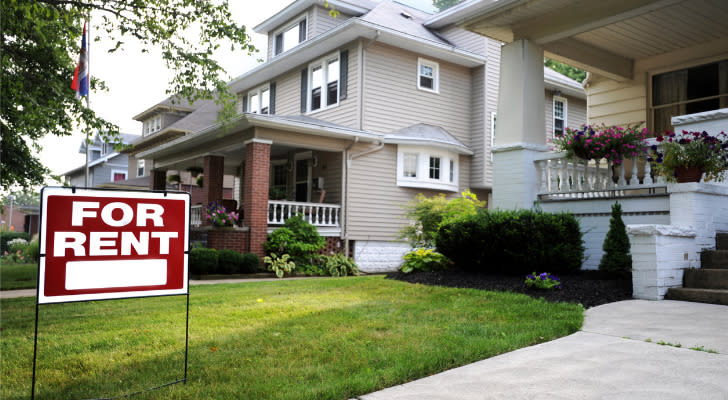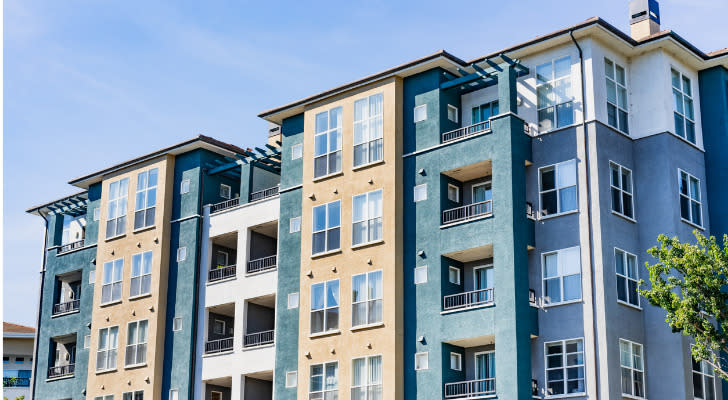What Is ROI for Rental Property?
Owning a rental property can be an excellent way to create a passive income stream. Before you buy, however, it’s helpful to know how to calculate ROI on a rental property to make sure it’s a smart investment. There’s more than one way to determine a rental property’s expected ROI when gauging how profitable it’s likely to be. For help figuring out how rental properties could work into your financial plan, consider working with a financial advisor.
What Is ROI for Rental Property?
ROI stands for return on investment. Put simply, it is how much money you make (or lose) on any investment.
The ROI for a rental property represents how much income the property produces versus the amount of money you invest in maintaining it.
If you’re interested in owning rental property for passive income, ROI is an important consideration. Failing to perform an ROI calculation means going in blind, which is never a good idea.
It’s also helpful to perform ROI calculations on a rolling basis once you own a rental property to estimate your profit margin. When inflation pushes up the cost of maintenance, for example, that can directly affect your bottom line.
How to Calculate ROI on Rental Property
The simplest way to calculate ROI on a rental property is to subtract annual operating costs from annual rental income and divide the total by the mortgage value. However, there are some other calculations you can use to determine how much of a return you might expect when investing in a specific property.
Cash Flow ROI Calculation
Cash flow properties generate a steady stream of cash each month after operating expenses are paid. The cash flow ROI calculation is fairly straightforward:
Gross rent – Expenses = Cash flow
Operating expenses for rental property can include things like marketing or advertising while the property is vacant, property management services if you’re hiring someone else to oversee the property, repairs, maintenance, property taxes and insurance.
The cash flow ROI calculation tells you how much money you can expect to pocket monthly from a rental property, based purely on what comes in and what goes out.
Cash-on-Cash Return
Cash-on-cash return measures a rental property’s annual cash flow based on the amount of cash invested. Here’s how to find cash-on-cash return for a rental property:
Annual cash flow / Total cash invested x 100 = Cash-on-cash return
This ROI calculation is typically used to gauge how well a rental property might perform over a given year, based on how much cash you invest in it.
Cap Rate
The cap rate or capitalization rate for a rental property is the estimated rate of return. To find the cap rate, you’d divide the net operating income of a property by its purchase price.
Net operating income / Purchase price x 100 = Cap rate
The lower the cap rate, the lower the risk while a higher cap rate can suggest that a rental property is a riskier investment.
Net Operating Income
Net operating income or NOI is the difference between the rental income a property generates and what you pay for operating expenses and vacancy losses. Here’s how to find NOI for a rental property:
Rental income – Operating expenses – Vacancy losses = NOI
NOI measures profitability based solely on operating expenses and vacancy losses. This calculation does not include mortgage expenses if you’ve taken out a loan to purchase the property.
You might use NOI to calculate ROI on a rental property if you’re comparing multiple properties since you don’t need mortgage details to make the calculations.
What Is the 2% Rule in Real Estate?
The 2% rule in real estate is another simple way to calculate ROI for rental properties. According to this rule, if the monthly rent for a rental property is at least 2% of its purchase price, then odds are it should generate positive cash flow.
The calculation for the 2% rule looks like this:
Monthly rent / Purchase price x 100 = X
In this case, X represents the percentage you get after completing the calculation. If you do the calculation and get 2% or higher, then the property is likely to produce positive cash flow. On the other hand, if you get a number below 2% then the property may not be profitable.
What Is a Good Rate of Return for a Rental Property?
Just as there’s no single option for how to calculate ROI on a rental property, there’s no set-in-stone number that translates to a good rate of return. The reason is that there are a variety of factors that can influence the returns a property generates, including:
Purchase price
Mortgage costs, including your down payment, closing costs and monthly payments
Rental income
Occupancy and vacancy rates
Operating expenses
When gauging what is a good rate of return for a rental property, it’s important to consider your specific goals and objectives. For example, you might have a baseline ROI or cash flow target that you’re hoping to reach monthly or annually.
Looking at the rate of return in that context can help you to evaluate prospective investments and find ones that are most likely to align with both your goals and risk tolerance. It’s also important to consider overall demand and market conditions in the area where you’re shopping for rental properties.
Rental housing is something people will still need, even if the economy weakens or slips into a depression. However, a changing economic landscape may see demand for rental properties cooling in the hottest or most expensive markets. High inflation can also shrink profit margins if you’re spending more to maintain the property.
The Bottom Line
Knowing how to calculate ROI on a rental property can be invaluable when you’re searching for the right properties to invest in. Running multiple calculations using different formulas can offer varying perspectives on how much profit you might expect to see. You can then compare those numbers to the returns you’re hoping to see in order to decide if a property is a good match.
Investing Tips
Consider talking to a financial advisor about the pros and cons of rental property investing and whether it might be right for you. Finding a qualified financial advisor doesn’t have to be hard. SmartAsset’s free tool matches you with up to three financial advisors who serve your area, and you can interview your advisor matches at no cost to decide which one is right for you. If you’re ready to find an advisor who can help you achieve your financial goals, get started now.
If you’d like to invest in a rental property without owning it, you might consider a real estate investment trust (REIT) instead. A REIT owns and manages real estate investment properties while paying out dividends to investors.
Photo credit: ©iStock.com/ArLawKa AungTun, ©iStock.com/xeni4ka, ©iStock.com/Sundry Photography
The post How to Calculate ROI on Rental Properties appeared first on SmartAsset Blog.




